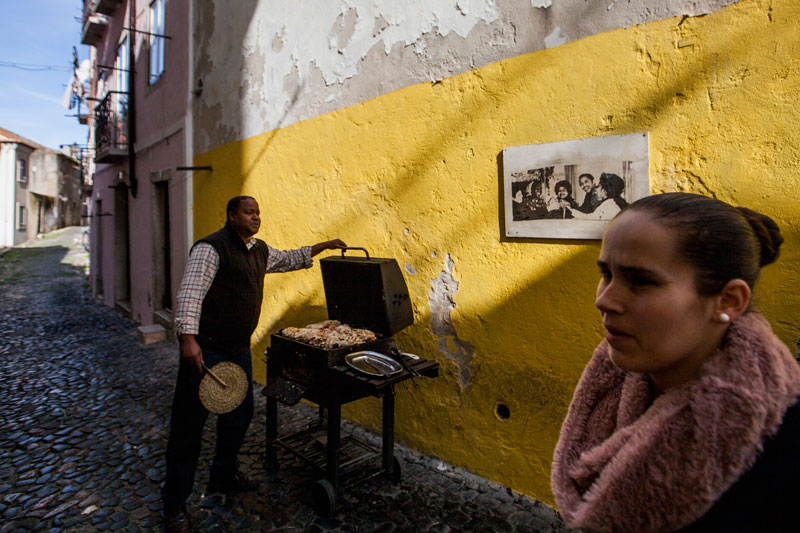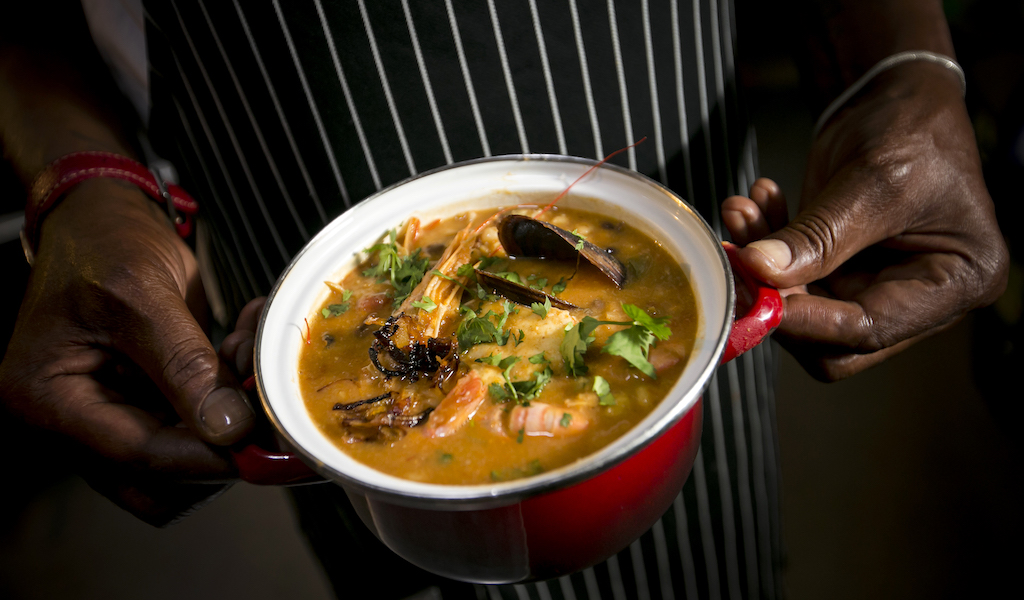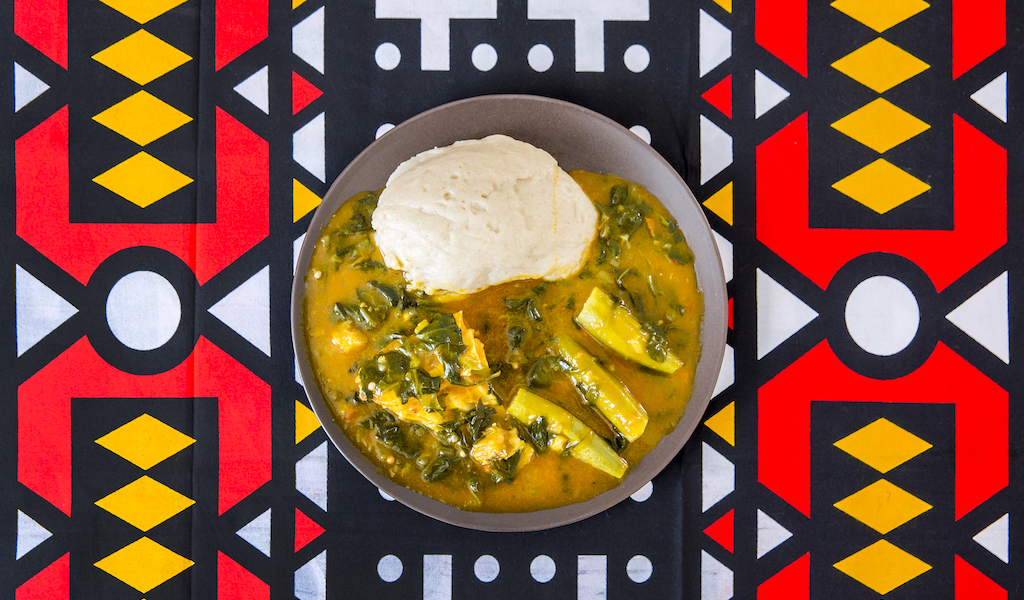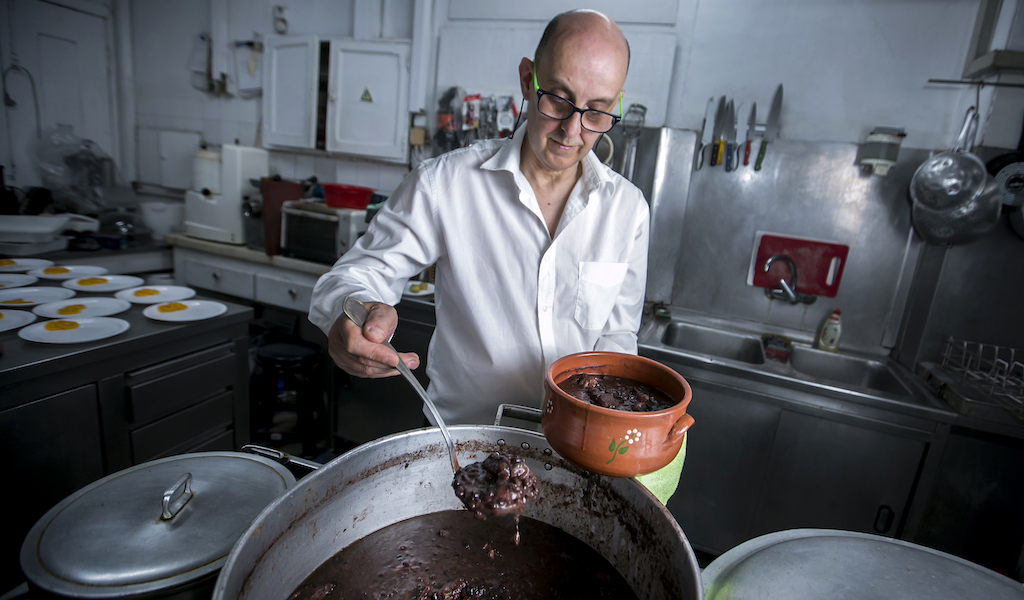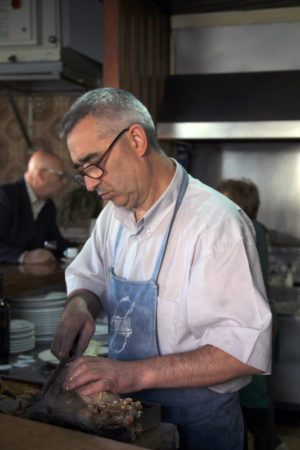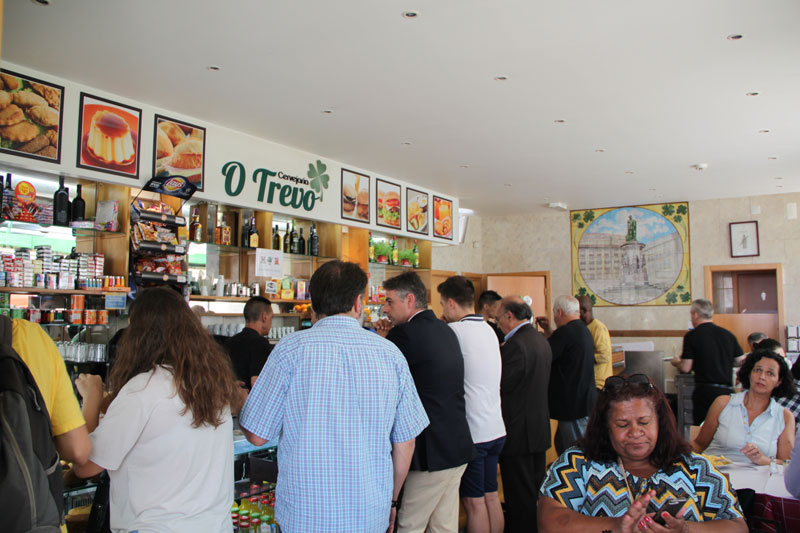We can't find the internet
Attempting to reconnect
Something went wrong!
Hang in there while we get back on track
Search results for "Francesca Savoldi"
Lisbon
Post-Colonial Lisbon: Mozambique
Lisbon’s communities from Portugal’s former colonies provide the strongest link to the country’s past, when it was the hub of a trading empire that connected Macau in the east to Rio de Janeiro in the west. Though integral elements of Lisbon life, these communities can sometimes be an invisible presence in their adopted land, pushed out to the periphery of the city. With our “Postcolonial Lisbon” series, CB hopes to bring these communities back into the center, looking at their cuisine, history and cultural life. In this third installment of the series, we dive into Lisbon’s Mozambican community.
Read moreLisbon
Post-Colonial Lisbon: Cape Verde
On a narrow and, until recently, slightly forgotten street in Lisbon’s city center, a simple Cape Verdean eatery is holding its own. As one of the few tascas serving up African dishes in this part of town, Tambarina, with its dozen tables and keyboard and mics set up in the corner, bears testimony to this urban quarter’s historical connections to the people of Africa’s northwestern archipelago. Rua Poço dos Negros – a street whose name (poço means “pit” in Portuguese) reveals a disturbing history as a mass grave site for the bodies of enslaved people – is on the border of what until two decades ago was known as “the triangle.” This is an area extending to São Bento and which in the 1970s became home to a new group of migrant Cape Verdeans.
Read moreLisbon
Post-Colonial Lisbon: Angola
Those normally finding themselves craving Angolan flavors in central Lisbon head straight to Mouraria, the medieval downtown neighborhood that has experienced a conceptual conversion of its peripheral status into a landmark of cultural and culinary diversity. Despite it being the area with the highest density of Angolans in Lisbon’s city center, Angolan restaurants open and close at a rapid rate, with now-shuttered CB favorites Palanca Gigante and Shilabo’s falling prey to this trend. In the beginning, these restaurants were only popular among the Angolan community, but nowadays, due to the rehabilitation of the neighborhood, a new clientele is discovering them. Now that we can’t get the country’s iconic national dish, muamba, at Shilabo’s or Palanca Gigante, we head to Rato instead for a taste of Angola.
Read moreLisbon
Post-Colonial Lisbon: Brazil
Despite Brazil being the largest of Portugal’s former colonies, the presence of its people in Lisbon has only been felt recently. During the 1950s and 60s, Brazilians in Portugal were limited to small groups of students, a few migrant adventurers and those Portuguese descendants born in Brazil who decided to return to the motherland. However, since the 90s, a more regular coming-and-going has been taking place between Brazil and Portugal. This pendulum-like swing of migration is a consequence of their respective political and economic crises and moments of growth. At the beginning of that decade, many Brazilians moved to Lisbon in the wake of the difficult inflationary crisis that was affecting South America’s biggest nation. By 2005, they formed the largest foreign community settled in the Portuguese capital, with more than 30,000 residents.
Read moreLisbon
Post-Colonial Lisbon: Mozambique
Lisbon’s communities from Portugal’s former colonies provide the strongest link to the country’s past, when it was the hub of a trading empire that connected Macau in the east to Rio de Janeiro in the west. Though integral elements of Lisbon life, these communities can sometimes be an invisible presence in their adopted land, pushed out to the periphery of the city. With our “Postcolonial Lisbon” series, CB hopes to bring these communities back into the center, looking at their cuisine, history and cultural life. In this third installment of the series, we dive into Lisbon’s Mozambican community.
Read morePorto
Casa Guedes: Roasted to Porkfection
Forget the famous francesinha. The best sandwich in Porto – arguably in the country – can be found in a little 1970s tile-lined eatery; the unremarkable interior belies the iconic status of its most celebrated dish. Served up on the corner of Praça Poveiros, a square named after the fishermen from the storied maritime city Póvoa de Varzim, located just north of Porto, the sandes de pernil (roast pork sandwiches) are a curious joy to watch being assembled as well as, of course, to eat. One by one, roast pork legs are slowly cooked in the huge oven in the kitchen behind the bar of Casa Guedes. They are then served directly from the roasting tray by the owner himself, Mr. Cesar.
Read moreLisbon
O Trevo: Chicken Soup for the Portuguese Soul
A legendary snack bar sits on a corner of Praça Luís de Camões, a busy square dedicated to one of Portugal’s most celebrated poets (his most famous work is the epic Os Lusíadas, a fantastical interpretation of the Portuguese voyages of discovery, narrated in Homeric style). The square is a major thoroughfare in Chiado and witnesses thousands of journeys daily. Many passing through make a pit stop at O Trevo. This tiny and perpetually packed eatery has historical roots in the area; traces of the old sign, “Leitaria Trevo,” over the marble entrance reveal its beginnings as a dairy some 80 years ago.
Read more